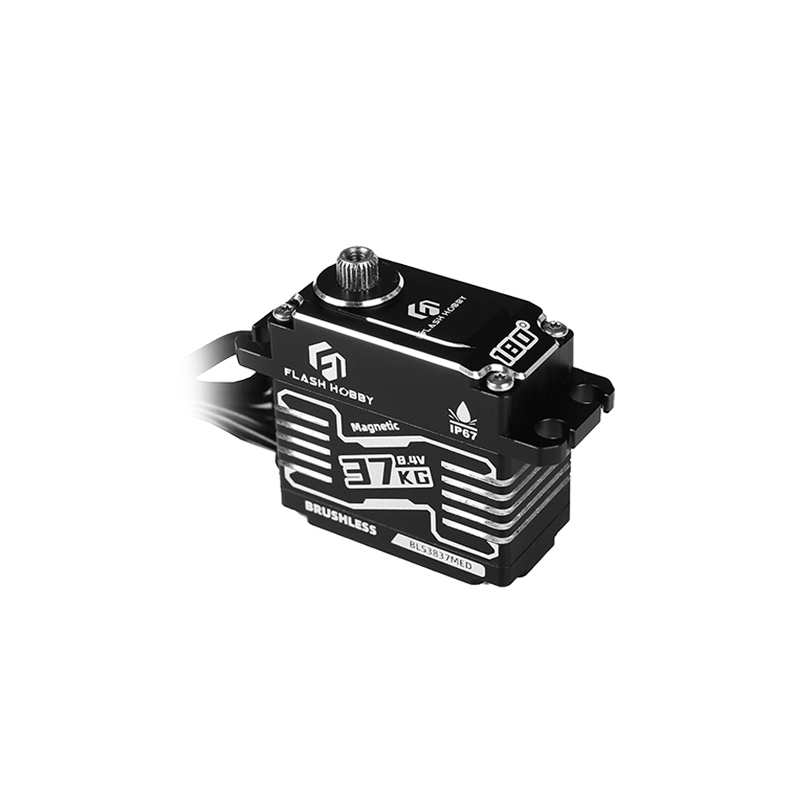Magnetic Marvels: Decoding the Role of Magnetic Technology in Magnetic Servo Operation
2023-11-29
Introduction:
In the realm of precision control systems, magnetic servos emerge as technological marvels, rewriting the rules of motion control. At the heart of these systems lies magnetic technology, a potent force that revolutionizes how motors operate and how machines move. In this blog, we will delve into the intricate workings of magnetic technology and unveil its pivotal role in the operation of a magnetic servo.
Magnetic Fields: The Architects of Control
1. Magnetic Sensing:
- At the core of a magnetic servo's functionality is its ability to sense position and movement through magnetic fields. Magnetic sensors, often in the form of encoders, detect changes in the magnetic field to precisely determine the rotor's position in the motor.
2. Non-Contact Sensing:
- One of the key advantages of magnetic technology in servos is non-contact sensing. Unlike traditional systems that may rely on physical components like brushes or gears for feedback, magnetic sensors operate without direct contact, minimizing wear and tear.
3. Magnetic Encoders:
- Magnetic encoders play a central role in providing accurate position feedback. These devices generate signals based on the changes in magnetic fields, allowing the controller to continuously adjust and optimize the motor's performance.
Direct Drive Technology: Revolutionizing Motion Control
1. Elimination of Gearing:
- In magnetic servos, direct drive technology takes center stage. This innovative approach eliminates the need for mechanical components like gears. The rotor is directly coupled to the load, resulting in a more direct and efficient transfer of motion.
2. Brushless Motors:
- Magnetic technology complements the use of brushless motors in servos. These motors leverage permanent magnets and electromagnetic fields to generate motion without the need for brushes, leading to smoother operation and reduced maintenance.
3. Precision with Magnetic Fields:
- The use of magnetic fields in brushless motors allows for precise control over the movement of the rotor. The magnetic fields govern the interaction between the stator and rotor, enabling accurate and responsive adjustments.
Control Algorithms: Orchestrating Magnetic Symphony
1. Closed-Loop Control:
- Magnetic servos employ sophisticated closed-loop control systems. The feedback from magnetic sensors is continuously fed back to the controller, allowing real-time adjustments to maintain the desired position, speed, and torque.
2. Enhanced Performance:
- The dynamic response of magnetic servos, driven by advanced control algorithms, results in enhanced performance characteristics. These servos can swiftly and precisely adapt to changes in load, ensuring stability and efficiency.
Magnetic Technology in Energy Efficiency
1. Efficient Energy Conversion:
- Magnetic technology contributes to the efficient conversion of electrical energy into mechanical motion. The brushless nature of magnetic motors minimizes energy loss through friction and heat generation, optimizing overall system efficiency.
2. Regenerative Braking:
- Some magnetic servos incorporate regenerative braking systems. In deceleration or braking phases, the servo can reverse its operation to act as a generator, converting kinetic energy back into electrical energy. This regenerative capability enhances energy efficiency.
Conclusion: Magnetic Mastery Unleashed
As we unravel the intricacies of magnetic technology in the operation of magnetic servos, a profound realization emerges—the marriage of magnetic fields and sophisticated control algorithms has birthed a new era of precision motion control. From non-contact sensing to direct drive efficiency, magnetic servos stand as testaments to the mastery of magnetic technology in the world of advanced automation. As these marvels of engineering continue to shape industries and redefine possibilities, the magnetic symphony orchestrated within them heralds a future where precision control reaches unprecedented heights.



